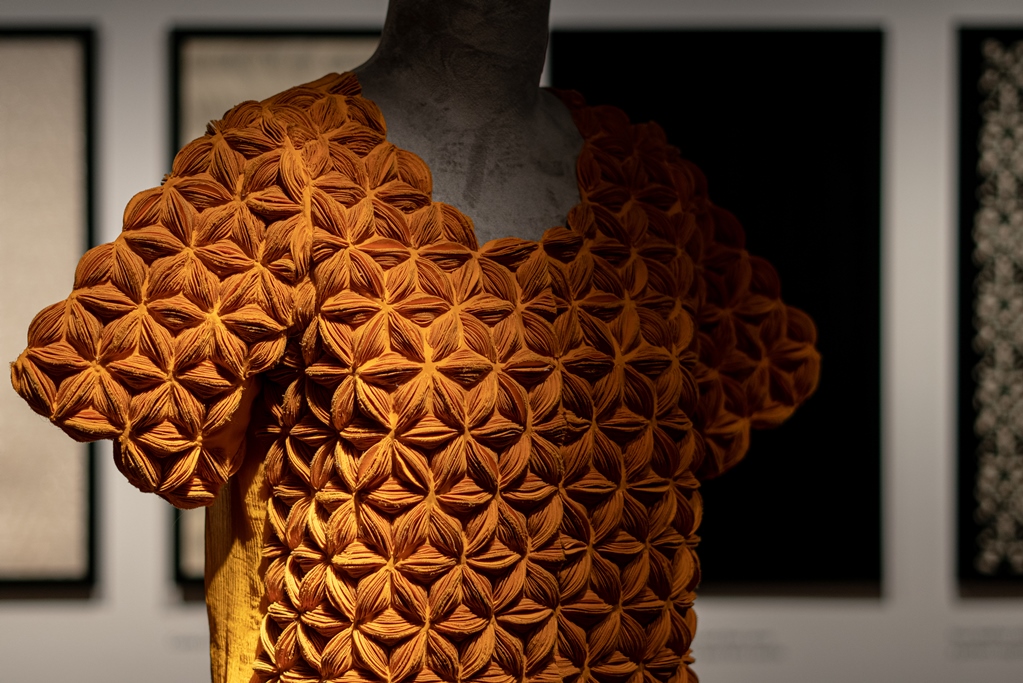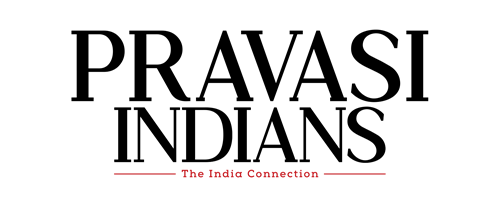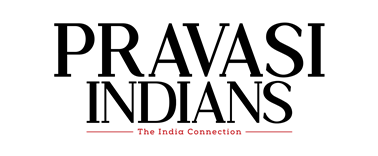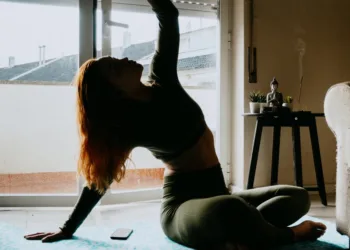SO FUNCTIONALITY AND CREATIVITY ARE BOTH IMPORTANT TO ME’
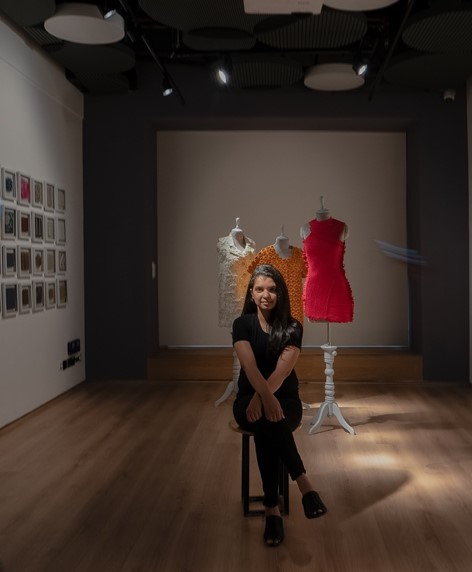
RIMZIM DADU needs no introduction. What makes her stand out from her peers in fashion is her innovative technique of weaving fabric with metal. The result is a rich glossy look that stands out in a crowd
BY RUKMA SALUJA
Rimzim Dadu grew up amidst fashion. Her father ran an export house in Delhi and she was exposed to fabric, cutting, sewing and all the paraphernalia associated with fashion from an early age. She would accompany her father to international exhibitions and trade shows like Prêt-à-Porter, Premier Vision, Hong Kong Fashion Week and WWD Magic, Las Vegas. It was no surprise that she studied Fashion Design and Technology at Pearl Academy in Delhi. Getting chosen for Lakme Fashion Week’s Gen Next program was what set the ball rolling for her. Her love of fabric and her love for experimentation led to the production of fabric woven with metal. The clothes have an eye-catching appeal. KNMA (Kiran Nader Museum of Art) recently held a retrospective exhibition celebrating 15 years of her work in fashion.

Excerpts from an interview:
You are known as a ‘progressive texturist’. Could you explain what that means?
This term collectively just reflects the brand’s ethos of experimentation, innovation, art and surface texturing. The futuristic textiles and designs from the brand are the amalgamation of this ethos. The media coined this term and I am perfectly comfortable with it as it nicely encapsulates what we do.
What gave birth to the idea of using metal in weaving?
Surface texturing is at the heart of everything we do. We love seeing the unexplored potential of a material—often by breaking apart and then putting back together. That’s how we discover our techniques. It’s a time consuming process— sometimes it takes years. But it’s very satisfying when I give the go-ahead to a textile after a prolonged process of experimentation to understand its fluidity, its structure and its ability to take shape on human forms. The process of creating silhouettes kicks in at this stage. Once again, it’s driven by the re-engineered material and its abilities and we don’t force a silhouette on it. We try different things, keeping comfort and wearability in mind. My pieces are often described as wearable art, so functionality and art are both important to me.
Since you do not follow fashion forecasts and trends, where do you find inspiration?
The material has always been my inspiration and my muse. My creative process starts from the point when I get excited about a material. Then we start experimenting with it—taking it apart and then putting it back together in different ways—to see its hidden potential and then present it in a form that nobody expects. The deception of fluidity in structure, and structure in fluidity is something that excites me. Making the person try on something in metal and seeing them go “Oh, I didn’t know it would be so soft and comfortable” is something that drives me to constantly push myself and my muse—the material— further and further. Routine bores me and somehow I am always attracted to the unexpected. It’s good to have a bit of a rebel streak—it pushes me to break norms and conventions. When people describe my work as wearable art, I feel vindicated.
What childhood memories influence your design sensibility?
My design philosophy has evolved over the years. I usually don’t like tags but now I can reluctantly own the definition of wearable art that often gets assigned to my clothes. While the focus still remains on the textiles, the wearability and comfort factor is equally important to me.
You have been quoted as saying you have taken inspiration from the different artworks at KNMA. Can you give examples?
Going back to our roots is what inspired this collection. I wanted to revisit my work of the past 15 years with gratitude, honesty and also through a critical lens. We took inspiration from our textile innovations at different points in our journey to make the latest collection. We used innovative surfaces—like paper, silicone, acrylic, steel, re-engineered zari and chiffon—in this collection. It was interesting to revisit the work I did more than a decade ago and see it with a fresh perspective. It was refreshing to see that textile explorations from more than a decade ago are still relevant. I was happy to bring them back on the runway. Each look was an ode to our journey and it further strengthened our resolve to stay true to our ethos of creating timeless pieces. There is no limitation to when I look at a material and wonder if it could work as a surface. I don’t go to fabric stores for sourcing or inspiration. I go to unusual places like factories, scrap markets and hardware shops, to name a few. But not every experiment works. So even the different artworks at KNMA inspired me.
